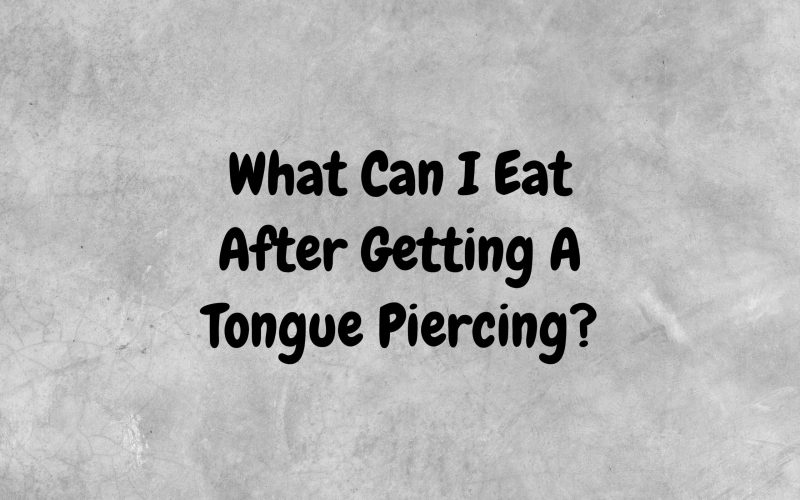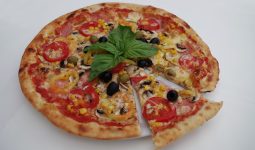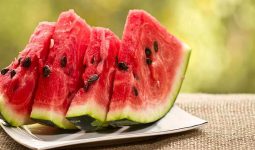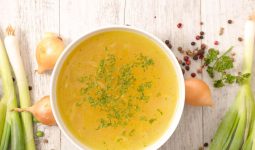Getting a tongue piercing can be a fun and exciting way to express yourself, but it also comes with certain limitations and restrictions, especially when it comes to your diet.
You must be mindful of what to eat after tongue piercing to ensure proper healing and minimize discomfort.
A tongue piercing is a delicate procedure that can leave your tongue sore and swollen for a few days.
During this time, choosing foods that are easy to eat and won’t irritate the piercing site is crucial.
Knowing what to eat after a tongue piercing can help speed healing and prevent complications.
The right foods can help reduce inflammation, prevent infection, and make healing more comfortable.
First Few Days
1. Cold Foods and Beverages
Cold foods and beverages are crucial immediately after getting a tongue piercing because they reduce swelling and numb the piercing site, relieving pain and discomfort.
One of the simplest and most effective options is ice chips. Sucking on ice chips helps to constrict blood vessels, which can significantly reduce swelling and provide a soothing effect on the inflamed area.
Let the ice chips melt in your mouth rather than chewing them, as chewing can aggravate the piercing and cause additional pain.
Cold water is another excellent choice; it helps keep the mouth clean and hydrated and reduces swelling.
Frequent sips of cold water throughout the day can rinse away bacteria and food particles that might otherwise irritate the new piercing.
Popsicles are a tasty and practical option as well. They offer the dual benefit of cooling the piercing site and providing hydration.
Opt for sugar-free popsicles to avoid excess sugar, which can promote bacterial growth in the mouth.
Further, the act of sucking on a popsicle can be comforting and divert attention from the discomfort.
2. Soft and Bland Foods
In the immediate post-piercing period, consuming soft and bland foods is crucial to avoid irritating the tongue and the fresh piercing.
Soft foods are gentle on the pierced area and require minimal chewing, reducing the risk of accidentally biting the piercing or causing discomfort.
Bland foods, lacking intense flavors or spices, minimize the chance of causing any burning or stinging sensations around the piercing.
Yogurt is an excellent option due to its smooth texture and cooling effect.
So, opt for plain, unsweetened yogurt to avoid added sugars and flavors that could irritate the piercing.
Yogurt can also provide beneficial probiotics, aiding overall oral health.
Smoothies are another fantastic choice, as they can be packed with nutrients from fruits and vegetables.
However, it’s essential to avoid adding seeds or acidic ingredients like citrus fruits, which can irritate.
Stick to soft fruits like bananas or berries and blend them thoroughly to ensure a smooth consistency.
Applesauce is another soft and bland food that is easy to consume without much effort.
It’s gentle on the piercing and can be slightly chilled to help reduce swelling.
Focusing on these soft and bland foods can nourish your body without compromising the healing process of your new tongue piercing.
First Week to Two Weeks

Soft Proteins
1. Scrambled Eggs
Scrambled eggs are soft, easy to chew, and packed with protein, essential for tissue repair and healing.
To make them even more gentle on your piercing, cook them until they are soft and slightly runny rather than firm.
Adding some cheese or soft vegetables like avocado increases the nutritional value without compromising texture.
2. Tofu
Tofu is another excellent source of protein that is soft and easy to eat.
It can be prepared in various ways to suit your taste without much chewing. You can try steaming or lightly pan-frying it until it is tender.
Tofu absorbs flavors well, so marinate it in mild, non-spicy sauces to make it more palatable without irritating your piercing.
3. Fish
Soft, flaky fish such as tilapia, cod, or salmon can be an ideal protein source during healing.
These fish are easy to chew and swallow, providing essential omega-3 fatty acids and protein for recovery.
Bake or steam the fish to keep it tender, and avoid using strong spices.
You can pair it with soft sides like mashed potatoes or overcooked pasta to create a balanced and gentle meal.
4. Cottage Cheese
Cottage cheese is soft, high in protein, and requires minimal chewing, making it a suitable option during the healing period.
It can be eaten independently or mixed with soft fruits like peaches or applesauce for added flavor and nutrients.
Ensure you choose varieties with no added sugar or large chunks to prevent irritation.
5. Greek Yogurt
While yogurt was mentioned for the immediate post-piercing period, Greek yogurt remains a valuable protein source as you progress.
It is thicker and often more nutrient-dense than regular yogurt. Choose plain or lightly flavored Greek yogurt to avoid irritation from sugars or artificial ingredients.
Further, adding a small amount of honey or blending it into a smoothie with soft fruits can provide additional variety.
Incorporating these soft proteins into your diet can help you maintain adequate nutrition and support healing after getting a tongue piercing.
Avoid adding strong spices or acidic ingredients to prevent irritation and promote faster recovery.
Soft Grains and Carbohydrates
1. Oatmeal
Oatmeal is an excellent choice after a tongue piercing, particularly during the first week to two weeks when the area is still tender.
It is soft and easy to swallow, reducing the need for excessive chewing that could irritate the piercing.
However, opt for plain oatmeal, as flavored varieties often contain sugar or artificial ingredients that might irritate.
You can enhance the taste with a small amount of honey or cinnamon, but avoid adding nuts or fruits that require chewing.
2. Plain Rice
Soft, plain rice is another gentle option for those recovering from a tongue piercing.
It can be a versatile meal base, pairing well with soft foods like finely chopped vegetables or soft proteins like tofu.
Ensure the rice is thoroughly cooked to a smooth consistency to avoid any rough texture that could aggravate the piercing.
Also, consider trying rice cooked in broth for added flavor without the need for spicy or acidic ingredients.
3. Overcooked Pasta
Overcooked pasta becomes very soft and easy to eat, making it suitable for those with a new tongue piercing.
Choose small pasta shapes like macaroni or small shells, which are easier to manage in the mouth.
Besides, avoid heavy or spicy sauces; instead, opt for a light, mild sauce such as a simple butter and herb mix or a plain cream sauce.
This ensures that the pasta remains easy to eat and does not introduce harsh flavors or textures that might cause discomfort.
By incorporating these soft grains and carbohydrates into your diet, you can ensure you receive essential nutrients while minimizing the risk of irritation or damage to your new tongue piercing.
Foods to Avoid After Tongue Piercing
1. Spicy Foods
Spicy foods, such as those containing hot peppers, chili powder, and certain spices, can significantly irritate a new tongue piercing.
The capsaicin in spicy foods causes a burning sensation, exacerbating the pain and swelling due to the piercing.
This irritation can delay the healing process, making it longer and more uncomfortable.
Also, spicy foods can increase saliva production, leading to more frequent cleaning requirements to avoid potential infection.
Opting for bland, non-irritating foods will help ensure a smoother healing process and reduce the risk of complications.
Once the piercing has healed completely, you can gradually reintroduce spicy foods into your diet.
2. Acidic Foods and Beverages
Acidic foods and beverages, including citrus fruits like oranges, lemons, limes, grapefruits, and juices, can cause significant irritation to a new tongue piercing.
The high acidity levels can create a stinging sensation and exacerbate swelling and pain at the piercing site.
Tomatoes and vinegar-based products like pickles and certain salad dressings also fall into this category and should be avoided.
The acid can disrupt the natural healing process by breaking down the tissue around the piercing, increasing the risk of prolonged healing times and potential infection.
Acidic foods can also alter the pH balance in your mouth, making it a more hospitable environment for bacteria to thrive, further complicating the healing process.
Sticking to neutral and alkaline foods during the initial healing period is advisable to promote faster recovery and minimize discomfort.
3. Hard or Crunchy Foods
Hard or crunchy foods, such as chips, nuts, hard candies, and crusty bread, pose a significant risk to a new tongue piercing.
These foods require substantial chewing and can easily bump against the piercing, causing pain, irritation, or even physical damage to the healing tissue.
Hard foods can dislodge the piercing or lead to bleeding, introducing bacteria and increasing the risk of infection.
Additionally, bits of crunchy food can get stuck around the piercing site, making it difficult to clean and maintain proper oral hygiene.
During the healing period, opting for soft, easy-to-chew foods that do not put unnecessary pressure on the tongue is essential.
Gradually reintroducing more complex foods can be considered once the piercing has fully healed.
4. Sticky Foods
Sticky foods, such as peanut butter, caramel, toffee, and gummy candies, can also create numerous problems for a new tongue piercing.
These foods can adhere to the jewelry and the piercing site, making it difficult to clean thoroughly.
The residue left by sticky foods can harbor bacteria, increasing the risk of infection and complications.
Besides, chewing sticky foods can cause the piercing to move excessively, prolonging the healing process and cause additional discomfort.
It’s best to avoid any food that can cling to the piercing or require excessive tongue movement to consume.
Once the piercing has completely healed, you can reintroduce sticky foods cautiously, ensuring you clean your mouth thoroughly after consumption.
5. Alcohol and Tobacco
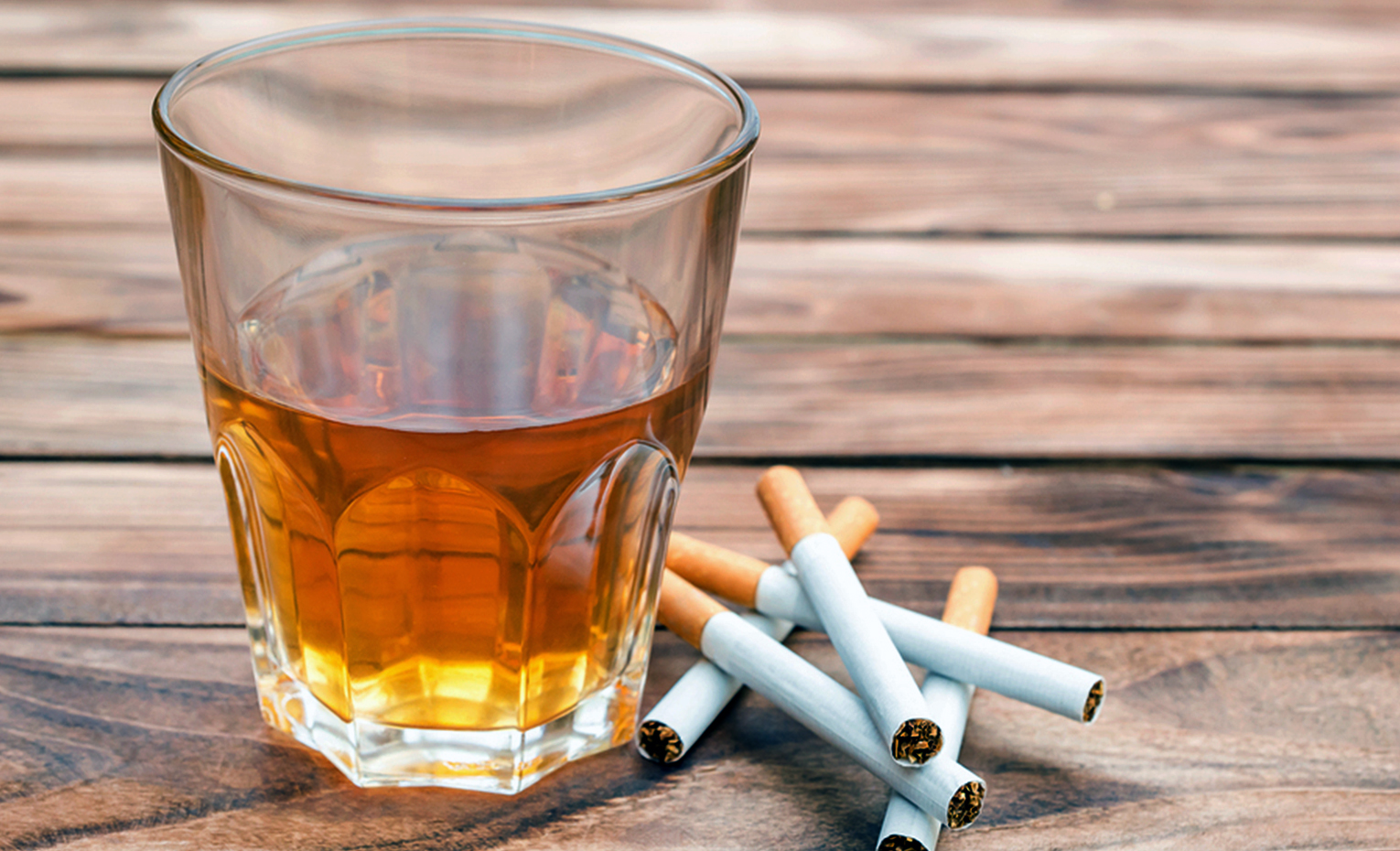
Alcohol and tobacco are highly detrimental to the healing process of a new tongue piercing.
Found in beverages like beer, wine, and spirits, alcohol can cause irritation and dryness in the mouth, leading to a more painful and prolonged healing process.
It also acts as a blood thinner, increasing bleeding and swelling.
Tobacco, on the other hand, whether smoked or chewed, introduces harmful chemicals and bacteria into the mouth. This increases the risk of infection and delays healing.
Smoking can also reduce blood flow to the pierced area, impeding the body’s natural healing mechanisms.
Moreover, the act of smoking or chewing tobacco can cause direct physical irritation to the piercing site.
Thus, it’s strongly recommended to avoid all forms of alcohol and smoking during the initial healing period to ensure a smooth and quick recovery.
Opting for a healthy, clean environment in your mouth will promote better healing outcomes.
General Tips for Eating After a Tongue Piercing
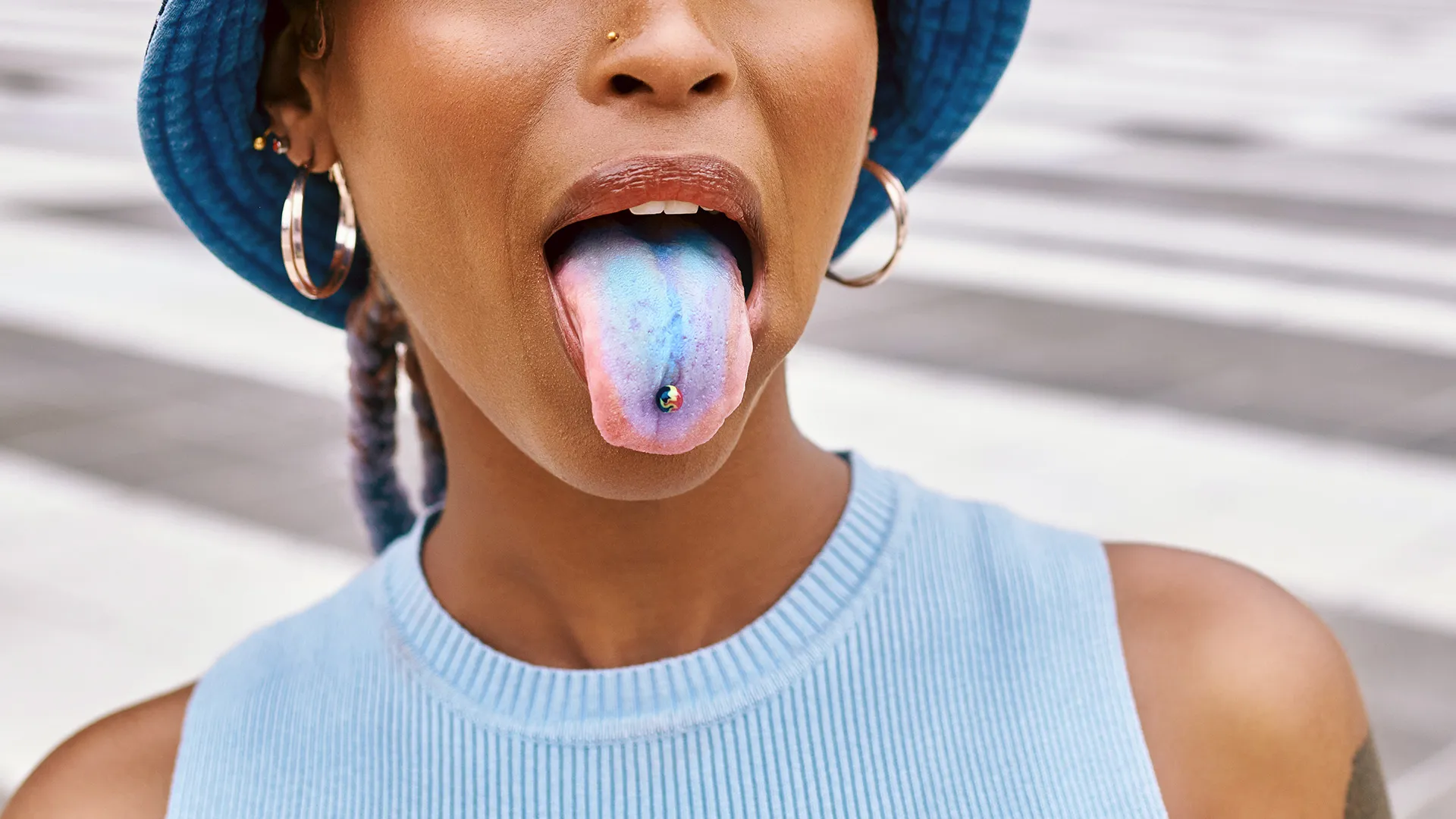
Small Bites and Slow Chewing
After getting a tongue piercing, the piercing site will be sensitive, and large bites or rapid chewing can cause significant discomfort and potential damage.
Taking small bites helps minimize the piercing movement, reducing the risk of irritation or tearing the fresh wound.
Chewing slowly also ensures you don’t accidentally bite the jewelry, which can be painful and may lead to complications such as chipped teeth or gum damage.
Besides, slow chewing allows you to monitor how your tongue feels during the process, giving you immediate feedback if something is wrong.
This mindful eating approach can also help recognize foods that might be too difficult to handle early in the healing process.
Over time, this practice will help you adapt to having a tongue piercing and reduce the likelihood of any accidental trauma.
Rinse After Eating
After every meal or snack, use a saline solution or an alcohol-free antibacterial mouthwash to cleanse the area.
This practice helps to remove food particles that might get trapped around the jewelry and in the wound, which could otherwise foster bacterial growth and lead to infection.
Saline solutions are gentle and promote healing by keeping the area clean and hydrated.
Alcohol-free mouthwashes are recommended because alcohol can irritate the sensitive tissue around the piercing and delay healing.
Regular rinsing also helps to reduce swelling and discomfort by keeping the piercing site free of irritants.
However, swish the solution around your mouth for at least 30 seconds to ensure thorough cleaning.
Incorporating this step into your routine will significantly aid healing and keep your piercing in optimal condition.
Stay Hydrated
Drinking plenty of water helps to flush out toxins and keep your mouth clean, reducing the risk of infection.
Hydration also promotes the production of saliva, a natural antiseptic that helps keep the piercing site clean and free from harmful bacteria.
Aim to drink at least eight glasses of water daily, more if you are active or live in a hot climate.
Also, avoid beverages that can dehydrate you, such as coffee, tea, and alcohol, as they can exacerbate swelling and irritation.
In addition to water, sucking on ice chips can help reduce swelling and provide some pain relief.
Avoid Straws
Using straws can put unnecessary pressure on your new tongue piercing, impeding healing and increasing the risk of complications.
When you suck on a straw, the motion causes your tongue to move in ways that can be painful and irritating to the fresh piercing.
This movement can lead to swelling, prolonged healing time, and even piercing displacement.
Moreover, the suction created can introduce bacteria into the piercing site, heightening the risk of infection.
Instead of straws, drink directly from a glass or bottle to minimize tongue movement and avoid additional pressure.
While it may seem like a minor adjustment, this small change can significantly affect how quickly and comfortably your piercing heals.
Further, avoiding straws reduces the chance of accidentally catching the jewelry on the straw, which can cause sudden pain or damage to the piercing site.
Listen to Your Body
Listening to your body means paying close attention to how your tongue feels throughout the healing process and making adjustments as needed.
If you experience significant pain, swelling, or any signs of infection, such as pus or increased redness, it’s crucial to seek professional advice immediately.
Your body will also give you signals about which foods are causing discomfort or irritation.
If a particular food causes pain or feels challenging to chew, avoid it and opt for softer alternatives.
Monitoring your body’s response helps identify and eliminate habits or foods hindering healing.
It’s also essential to follow the aftercare instructions provided by your piercer and not to ignore any unusual symptoms.
Being attentive and responsive to your body’s needs can ensure a smoother and faster healing process, preventing complications and promoting oral health.




